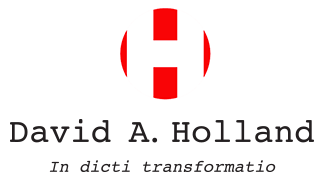As is often the case with books (and movies) a lot of stuff got cut in the final edit. The publisher had a specific word-count target in mind so after a frenzy of writing came the frenzy of cutting.
I wrote probably 7,000 to 8.000 words that didn’t end up in the book. In order to keep that writing from going completely to waste, I thought I would post some of it here. Here’s a snippet about Sarah Palin’s early childhood.
Sarah Palin first entered Skagway, Alaska, cradled tightly in her mother’s arms. Sally Heath, her two toddlers, and her mother were each belted tightly into the seat of a World War II-vintage Grumman Goose as it bounced, lurched and shuddered its way down through a patchy layer of thick clouds toward the implausibly blue-green waters of Skagway harbor. An anxious husband and father, Chuck Heath, paced the dock below, scanning the clouds for signs of his little tribe’s approach. He had driven ahead in the family’s old Rambler, traveling by road and ferry to secure a home before the rest arrived. Finally, he sees the descending plane and knows that the pilot is scanning the harbor for a section of water free enough of fishing vessels to allow a landing.
It is early June and winter has finally and fully released its icy grip on Alaska’s southeastern coast. Stepping out of the Grumman and onto the wooden dock, Sally Heath and her entourage would have been greeted by the thick, organic smell of salt air and sea life tinged with traces of spruce, alder and wood smoke. Looking around they would have noted evergreen covered foothills backed by craggy, snow covered mountain peaks jabbing high into the sky. Large clans of sea lions likely sunned themselves on the massive boulders that lined the bay where the mountains meet the sea. And a glimpse of a bald eagle or two in a treetop would not have been uncommon.
In the near distance, the entirety of Skagway could be taken in with a single glance. Then, as today, Skagway was about 3 blocks wide and ten blocks long, running southwest to northeast—just like the narrow valley that cradles the village in mossy outstretched arms. A man could walk at a leisurely pace from one end of town to the other in ten minutes.
In 1964, the gold rush days of Skagway lived only in history books, and the next boom, which would arrive on balcony-clad cruise ships, was still several decades away. In this era, Skagway is a sleepy, picturesque village accessible in practical terms only by air or sea. Its average population of 650-or-so residents tends to swell and wane with the seasons. Fishing and tourism create extra jobs during the short, mild summers. The winters are unbelievably harsh, long and, true to the origins of the name, swept by icy winds. The amenities are few. The Heaths don’t know a soul here. But they will find the welcome to be as warm as the winters were cold.
It is only a slight exaggeration to say that everyone in Alaska is from somewhere else—or is the child of someone who was from somewhere else. With the exception of the descendants of the Eskimo, Inuit, and other tribal groups, few Alaskans go back more than two generations in the land. Around 70% percent of current Alaska residents have arrived since statehood. As recently as 1990, the census revealed that more than 62% of the U.S. citizens living in Alaska had been born in another state.
As the statistics reveal, many are drawn to Alaska. But not all stay. Some come and find the going too tough. The winters too long and dark. The distance from relatives too great. The loss of the conveniences typical of life in “the lower 48” too burdensome. Yet a surprising number who come, never leave. And in the staying, they reveal something about themselves—more often than not it is a love for natural beauty, a pioneer spirit, stubborn self-reliance, and a certain, fierce brand of ambition.
In another time and place, Sarah would speak of this winnowing effect in her farewell speech as governor of this vast state. But on June 3, 1964, the five members of the Heath party stand upon the dock at Skagway as the newest candidates to be tested by life in Alaska. They will pass. They will stay. Indeed, they will thrive. The Heaths will have five good years in Skagway before moving even deeper into the heart of their new home state.
On this day the Heaths are Cheechakos on their way to becoming Sourdoughs —that uniquely proud and independent breed of individuals known as “Alaskans.” For the sleeping infant in Sally Heath’s arms, Alaskan would be the only thing she will ever remember being.

